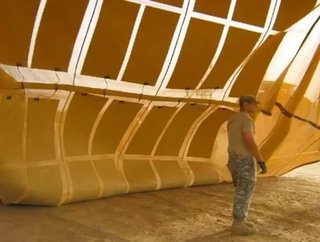The U.S. Army's Great Drive for Renewable Power

Click here to experience this article in our digital reader
The U.S. Department of Defense (DoD) has set forth some pretty aggressive plans to transition out of its dependence on foreign fossil fuels into a cleaner, more efficiently powered future. Each branch of the military, though collaborating on many efforts, has its own approach.
For the Army, reaching the goal of having 25 percent of its energy supplied from renewable sources by 2025 means employing a “net-zero strategy.”
"Specifically, a net-zero energy installation produces as much energy annually as it uses, and this does not mean replacement of current energy requirements with onsite energy production," said Katherine Hammack, assistant secretary of the Army for Installations, Energy & Environment, at a media roundtable event. "It means that installations address energy efficiency as the primary first step and then evaluate, repurpose and reuse energy as well as energy recovery."
Under the initiative, the Army will award $7 billion over the next ten years in contracts to both large and small businesses aimed at developing renewable and alternative power-generation projects at Army bases—the largest contracting opportunity released for renewable energy to date. That translates to 1,000 megawatts of power, a modest figure with greater implications.
Read more in Energy Digital's October Issue
The DoD consumes about 80 percent of the total energy under the federal government, which accounts for about one percent of total U.S. consumption. Gaining a considerable chunk of that market could mean big things for the overall green economy.
“What makes the current procurement interesting is that it's one of the most active areas where people are trying to build projects (within the DoD),” says Bob Tritt, Co-Chair of the Military Base and Communities practice law firm McKenna Long & Aldridge. “This is a truly open competition, big enough in size to generate interest in many areas from renewable energy companies to existing public utilities and government contractors.”
Motivated by the factors of energy security, cost and meeting federal mandates to meet clean energy goals, the DoD also touts the long-term benefits of the program. It will serve as a test bed for new and advanced technologies that could be broadly commercialized.
“Just like GPS systems and the internet came out of the DoD first, the more involved we are with these projects, the more prices will come down and we'll start to see more renewables across the board,” says Tritt.
COLLABORATION
Military personnel, at the highest levels of authority, have been very vocal in their support of the initiative for many years.
"We understand there's a need to enhance our energy security because it's operationally necessary, financially prudent and critical to our mission," Hammack said. "We know that power grids are increasingly vulnerable and expose Army operations to risk."
“We're just now beginning to really see the deals we need to see,” says Tritt. “This is just the tip of the iceberg, and we can expect to see projects continue to accelerate.”
With the help of the Energy Initiative Task Force (EITF), the process must be “clear, consistent and transparent so that we can provide the private sector with a consistent environment to engage with the Army which will allow EITF projects to maximize return on investments for both the Army and the industry,” Hammack added.
But, it's not all about cutting-edge coming up with technology. Under the strict, less forgiving requirements of federal contracts, it's required that the chosen technologies be reliable and proven. That requires a lot of experience and meeting a variation of other nuances. For that reason, many companies are teaming up to collectively meet all the necessary requirements in the procurement process.
Under Multiple Award Task Order Contracting ("MATOC"), companies are pre-qualified in four categories for individual task orders. In the Army's case, this presents a lot of opportunities for smaller businesses.
“Even if it's a big contract and a big business wins it, they have a requirement to use a significant amount of the value of the contract awarded to smaller subcontractors,” says Tritt. “Many side contracts are also reserved for smaller businesses, being under 12 megawatts each.”
After all the responses are received in early October, companies will be selected to compile task orders sometime early next year. Tritt estimates that in order to meet the Army's goal to build 1,000 megawatts of renewable energy between 2016 and 2025, a significant amount of projects will have to be carried out each year.
“It will be interesting to see how many companies populate those lists in the series of announcements over the next couple months,” says Tritt. “We'll see a lot of announced projects throughout the military over the next few years, but this, by far, will be the greatest attention grabbing story for a while.”
DOWNLOAD THE ENERGY DIGITAL IPAD APP






